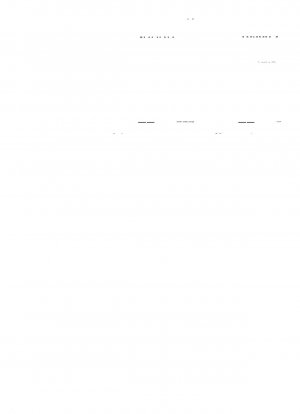ISO/IEC 15938-2:2002
Information technology - Multimedia content description interface - Part 2: Description definition language
- Standard No.
- ISO/IEC 15938-2:2002
- Release Date
- 2002
- Published By
- International Organization for Standardization (ISO)
- Latest
- ISO/IEC 15938-2:2002
- Scope
- 1 Scope of this International Standard
This International Standard specifies a metadata system for describing multimedia content. It specifies the Description Definition Language (DDL) that comprises part 2 of the standard (ISO/IEC 15938-2).
The goal of this part of the MPEG-7 International Standard is to specify a language that will enable MPEG-7 users and developers to:
· create valid MPEG-7 description schemes and descriptors;
· develop tools such as editors and parsers for processing descriptions, description schemes and descriptors;
· generate refinements, extensions and modifications to the DDL.
This International Standard describes the features of the DDL. It defines the syntax of the DDL constructs and datatypes and provides optional (informative) examples that illustrate the application of the DDL to the specification and instantiation of MPEG-7 descriptions.
2 Overview of Description Definition Language
This International Standard, known as the "Multimedia Content Description Interface", aims at providing standardized core technologies allowing the description of audiovisual data content in multimedia environments. This is a challenging task given the broad spectrum of requirements and targeted multimedia applications, and the broad number of audiovisual features of importance in such a context. In order to achieve this broad goal, the standard specifies:
- Descriptors (D): representations of Features, that define the syntax and the semantics of each feature representation;
- Description Schemes (DS), that specify the structure and semantics of the relationships between their components, which may be both Ds and DSs;
- A Description Definition Language (DDL), to allow the creation of new DSs and, possibly, Ds and to allow the extension and modification of existing DSs;
- System tools, to support multiplexing of description, synchronization issues, transmission mechanisms, file format, etc.
The DDL forms a core part of the MPEG-7 standard. It provides the solid descriptive foundation through which users can create their own Description Schemes and Descriptors. The DDL defines the syntactic rules to express and combine Description Schemes and Descriptors. According to the definition in the MPEG-7 Requirements Document [1] the DDL is
'...a language that allows the creation of new Description Schemes and, possibly, Descriptors. It also allows the extension and modification of existing Description Schemes.'
The DDL is not a modelling language such as Unified Modelling Language (UML) but a schema language to represent the results of modelling audiovisual data, i.e., DSs and Ds.
The DDL must satisfy the MPEG-7 DDL requirements. It has to be able to express spatial, temporal, structural, and conceptual relationships between the elements of a DS, and between DSs. It must provide a rich model for links and references between one or more descriptions and the data that it describes. In addition, it must be platform and application independent and human- and machine-readable.
(Non-normative) DDL Parser applications will be required which are capable of validating description schemes (content and structure) and descriptor data types [both primitive (integer, text, date, time) and composite (histograms, enumerated types)], against the DDL. The DDL Parsers must also be capable of validating MPEG-7 descriptions or instantiations, against their corresponding validated MPEG-7 schemas (DSs and Ds).
The DDL design has been informed by numerous proposals and input documents submitted to MPEG-7 since the MPEG-7 Call for Proposals in October 1998 [2]. It has also been heavily influenced by W3C's XML Schema Language [3,4,5] and the Resource Description Framework (RDF) [6].
At the 51
MPEG meeting in Noordwijkerhout in March 2000, it was decided to adopt XML Schema Language [3,4,5] as the MPEG-7 DDL. However because XML Schema language was not designed specifically for audiovisual content, certain extensions hav
ISO/IEC 15938-2:2002 history
- 2002 ISO/IEC 15938-2:2002 Information technology - Multimedia content description interface - Part 2: Description definition language
